Basics, Pt. 2 - Curve, Priority, & Tempo
Carefully manage your energy and position.
Curve
/kərv/
noun
- The steadily increase of available energy each turn.
- The distribution of energy costs in a deck.
“I don’t have anything to play, now I’m behind the curve..”
verb
- “Play on the curve” - to use all available energy each turn.
adjective
- “low curve” - having many cheap cards
- “high curve - having many expensive cards
Playing On The Curve
In general, you should aim to use all of your available energy each turn. Playing on the curve builds tempo over your opponent.
Conversely, if you don’t have cards to consume all your energy each turn, you may find yourself behind the curve.
Playing one card will provide different value than two smaller cards with the same total cost. For example, consider the Guardians of the Galaxy:
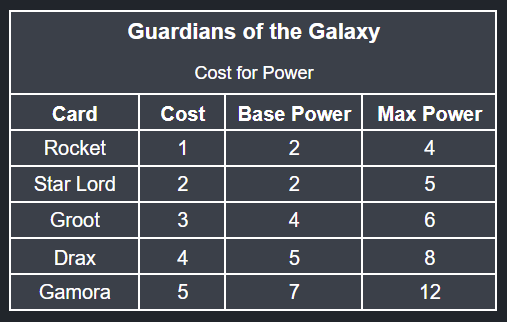
Strange, right? There are many combinations that can produce more power than one card of the same total energy. But given the limits of our hand size, often playing a single card on the curve is the most efficient use of available energy.
There are some cards like Sunspot, Infinaut, and She-Hulk that incentivize us to not spend energy. But play these cards carefully - without a supporting line, these cards are usually less efficient than just playing on the curve.
Fair and Unfair Decks
Cards like Lockjaw, Hela, and Mr. Negative enable unfair decks, that allow you to play more energy than you normally could playing on the curve.
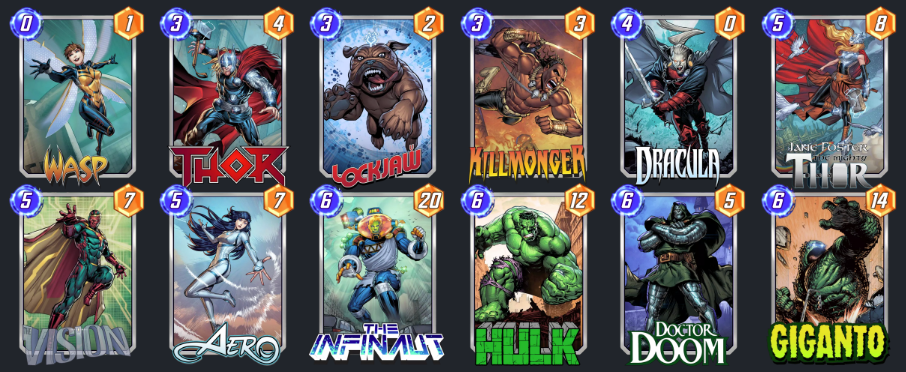
However, these decks are usually less reliable than their fair counterparts. They often depend heavily on chance, and are susceptible to disruption by your opponent. While they can lead to explosive victories, this uncertainty often makes snapping decisively more difficult.
High-Roll Decks
Unfair decks are risky, but exactly how risky? That’s up to you.
For example, here’s a relatively safe Mister Negative deck:
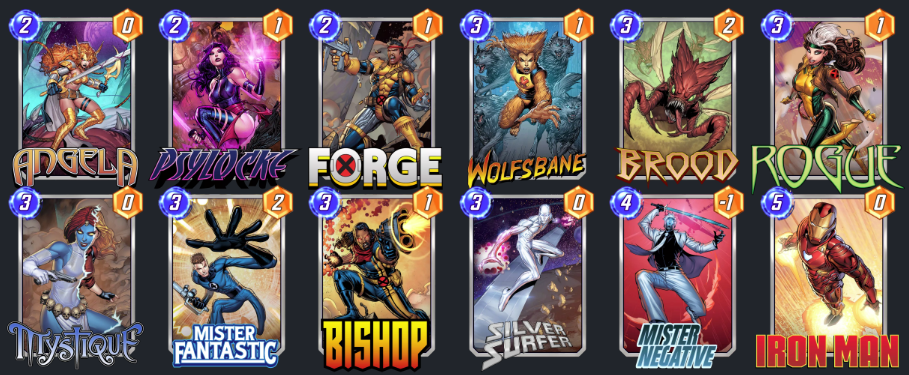
This deck chooses cards that synergize well with Mister Negative, having higher cost than power.
While this introduces some risk - you have draw Mister Negative, play him on turn 4, then draw good cards on turns 5 and 6 - there’s still viable win conditions without him. Angela, Iron Man, and a reliable Silver Surfer package all give you alternate paths to victory.
Compare that to this riskier Negative deck:
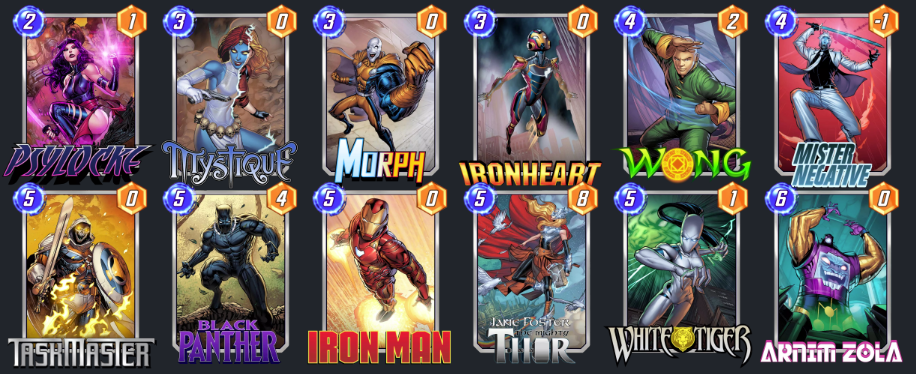
This is a high-roll deck - you have to make lucky draws to win, but it’s hugely powerful when the pieces line up. This deck gambles on playing Negative early, making huge draws, and dropping multiple cards for an explosive turn 6. It’s either win or retreat with this one.
Priority
/prīˈôrədē/
noun
- The right to reveal your cards first on the next turn.
“I’ll play for priority to get Cosmo out first next turn.”
Priority is indicated with a glowing orange border around a player’s name, and is determined using the same rules as tie breakers:
- The player with more winning lanes has priority.
- Otherwise, the player with more total power on the board has priority.
- Otherwise, priority is chosen randomly.
Many cards specifically depend on having priority, especially tech cards. Cards like Armor benefit from priority, protecting cards before your opponent is able to act. Conversely, cards like Shang Chi often benefit from going last, waiting until all of the opposing cards have been played for maximum effect.
Understanding priority is key to deckbuilding, to ensure your cards set each other up for their preferred priority on each turn.
Tempo
/ˈtempō/
noun
- A deck’s overall speed of development across turns.
“I’ve got tempo after playing Lizard and Maximus.”
While priority refers to acting first on a single turn, tempo refers to the overall speed of development of your cards across multiple turns.
Decks with fast tempo can often establish an early lead and force a lot of retreats. Decks like Leech Leader use this approach:
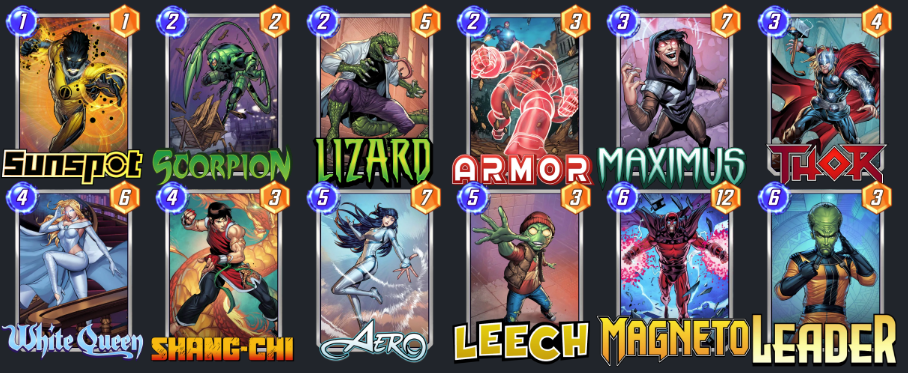
Their basic gameplan focuses on strong tempo - building an early lead with cards like Lizard, Maximus, and Thor, then using priority to disrupt their opponent with Leech, Leader, Aero and Magneto.
Decks with slow tempo take longer to develop, and have the benefit of waiting to see what their opponent plays. Sera “Miracle” decks often take this approach, building slowly to an explosive final turn.
Taken to the extreme, look at this Sera Control deck:
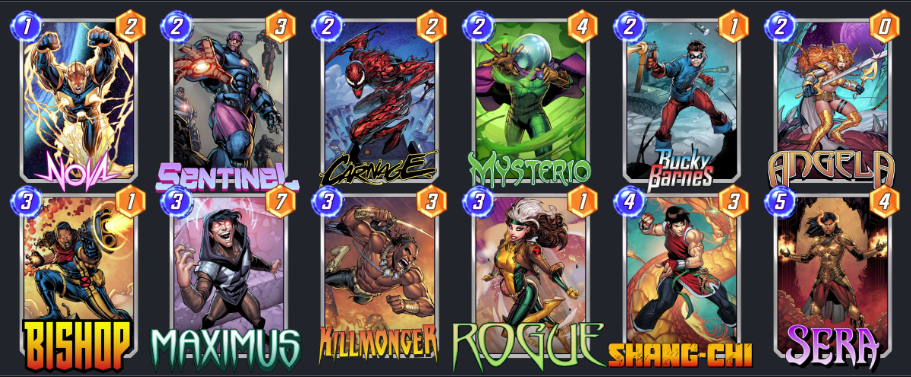
This deck takes the opposite approach, laying a foundation with cards like Angela and Bishop and slowly developing power. After playing Sera turn 5, this deck will likely lose priority on turn 6, allowing multiple counter-plays with Rogue, Killmonger, and Shang-Chi.
